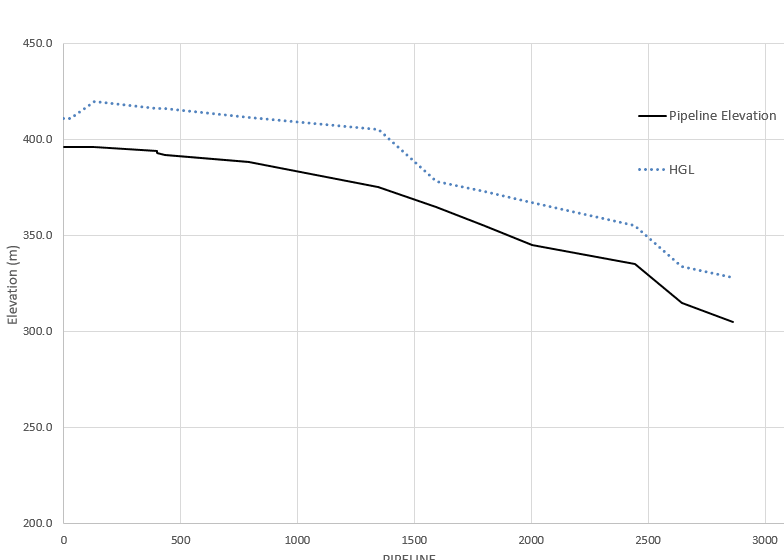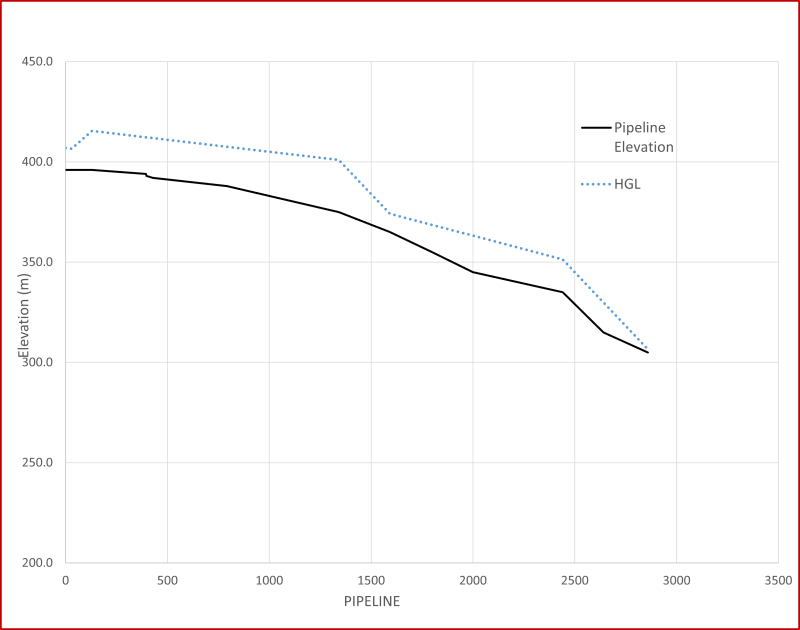Hi,
I am looking to figure out where will the flow in the pipeline go from full pipe to slack flow in the attached image?
Background:
The attached image shows a tailings pipeline going down into a tailings pond. The end of the pipeline is at atmospheric pressure. Since the end point of the HGL is at a higher elevation than the end point of the pipeline, it tells me that there is too much energy in the system that will be dissipated by slack flow. My question is, which section of the pipeline would the slack flow be in? How do you figure this out?
Thanks
I am looking to figure out where will the flow in the pipeline go from full pipe to slack flow in the attached image?
Background:
The attached image shows a tailings pipeline going down into a tailings pond. The end of the pipeline is at atmospheric pressure. Since the end point of the HGL is at a higher elevation than the end point of the pipeline, it tells me that there is too much energy in the system that will be dissipated by slack flow. My question is, which section of the pipeline would the slack flow be in? How do you figure this out?
Thanks


